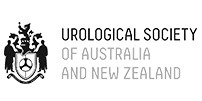1. History
Peyronie’s Disease has been affecting men around the world for centuries, with early descriptions of the condition recorded as far back as 1687. In 1743, French surgeon François de la Peyronie finally gave the condition a name, which has since led to doctors finding various Peyronie’s Disease treatments and solutions.
So, if you’ve recently been told you have Peyronie’s Disease, don’t panic at the scary-sounding name. Instead, read this article so you can wrap your head around what it all means and how we can help you.
2. What is Peyronies Disease?
The condition is generally characterised by a hard lump or plaque that forms in the erectile tissue of the penis. Most patients notice the presence of the disease when experiencing penile curvature, indentation and loss of penile length upon erection. It is also associated with a reduction in hardness of erections. These things can all occur with or without pain and can often prevent sexual activity.
The cause of the disease is still not fully understood, but experts believe that most cases are a result of repeated trauma to the penis, which can occur during sexual intercourse. It can occur in men of all ages, but it is most commonly found in men in their 50s.
Learn more about Peyronies Disease
3. Treatment Options:
When it comes to Peyronie’s Disease treatment in Australia, you have quite a few options. The treatment for Peyronie’s Disease will vary from patient to patient and depends on a variety of factors, such as the severity of penile shortening, the degree of penile curvature, whether there is also penile narrowing, and if erectile dysfunction is present.
a. Medication
Some of the currently available Peyronie’s Disease treatments in Australia include medication, electric current therapy, mechanical stretching and surgical penile reconstruction which can be done with or without grafting.
- Oral
There are several oral treatments used to treat Peyronie’s Disease, however, they have not proved to be as effective as surgery. Pentoxyifylline (Trental) is often prescribed for the first few months after PD diagnosis, as well as Vitamin E and potassium supplementations. In addition to this, medications to improve erectile dysfunction may be necessary.
- Injections
Injecting medicines, such as Verapamil or Collagenase clostridium histolyticum (Xiaflex), directly into the penis may lessen the curvature and pain associated with Peyronie’s Disease. If you do decide to undergo this treatment, you may need to undergo several injections over a time span of a few months. These penile injections can assist in breaking up scar tissue, or help men will less pain and lessen the curve.
b. Electrical current therapy
Also known as iontophoresis, this procedure is a non-invasive method to give the patient verapamil and steroids through the skin using an electrical current.
c. Assisting devices
Other non-surgical assisting devices for PD include undergoing mechanical stretching of the penis using penile extenders and the use of a vacuum device:
- Mechanical stretching using penile extenders
Otherwise known as penile traction therapy, this process involves wearing an extender device on your period to help reverse the curve overtime.
- Vacuum
A vacuum erection device is a tube that creates suction over the penis to mechanically stretch and lengthen it, and reduce curvature.
d. Surgical Procedures
There are three main types of Peyronie’s disease surgery:
1. Plication:
This procedure involves stitching the longer side of the penis to pull it back into the middle. stitches in the longer side of your penis to pull it more to the middle. This surgery usually only requires one day recovery time, and patients should abstain from sexual intercourse for 5 weeks post-operation.
2. Grafting:
Your physician will place a graft on the short side of your penis to make it match the longer side. You should be able to return to work in 2-3 days and resume sexual intercourse after 8 weeks.
3. Penile prosthesis/implant:
This surgery involves placement of a prosthesis into your penis to help straighten it and make it easier for you to get erections. You will likely be off work for 2–3 weeks and sexual activity for 5-6 weeks.
- How safe is surgery as a treatment for PD?
Although rare, like any surgery, there are risks involved. It is important to discuss these with your urologist so you can understand any adverse effects that may apply to your circumstance, such as:
- Change in penile sensation (usually returns in 1-2 months after surgery)
- Recurrent curvature (rare if the deformity is stable for 6-9 months before surgery)
- Erectile dysfunction (this is less likely to occur in men with strong pre-operative erections)
- Penile shortening (usually 1-2 cm if at all)
- Bleeding and infection are complications associated with most surgical procedures but are quite rare with these operations.
The only way to ensure that you make the right decision for your body is by meeting with an experienced Urologist who can talk you through the various options and give you personalised and specialist advice.
Luckily, that is precisely what we do here at Katelaris Urology. So whether you think you might be experiencing symptoms of Peyronie’s Disease or already have a diagnosis and need advice on how to proceed, give our office a call today on (02) 9477 7904 to arrange an appointment. Alternatively, if you’d rather fill out a contact form or e-mail us at [email protected], we’ll get back to you as soon as possible.
For more answers about Peyronie’s Disease, or other urological issues, contact Dr Katelaris at Katelarisurology.com.au.







